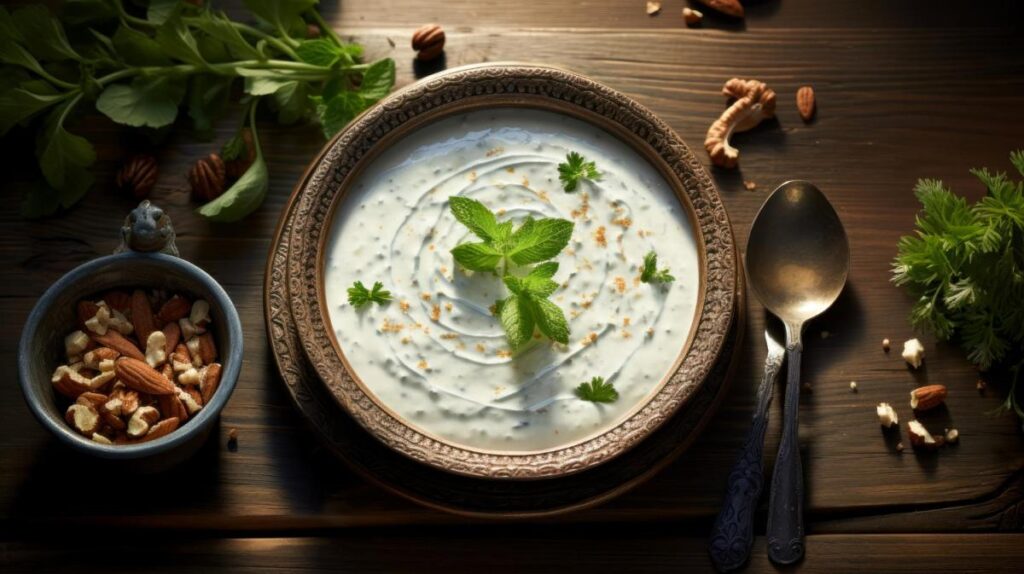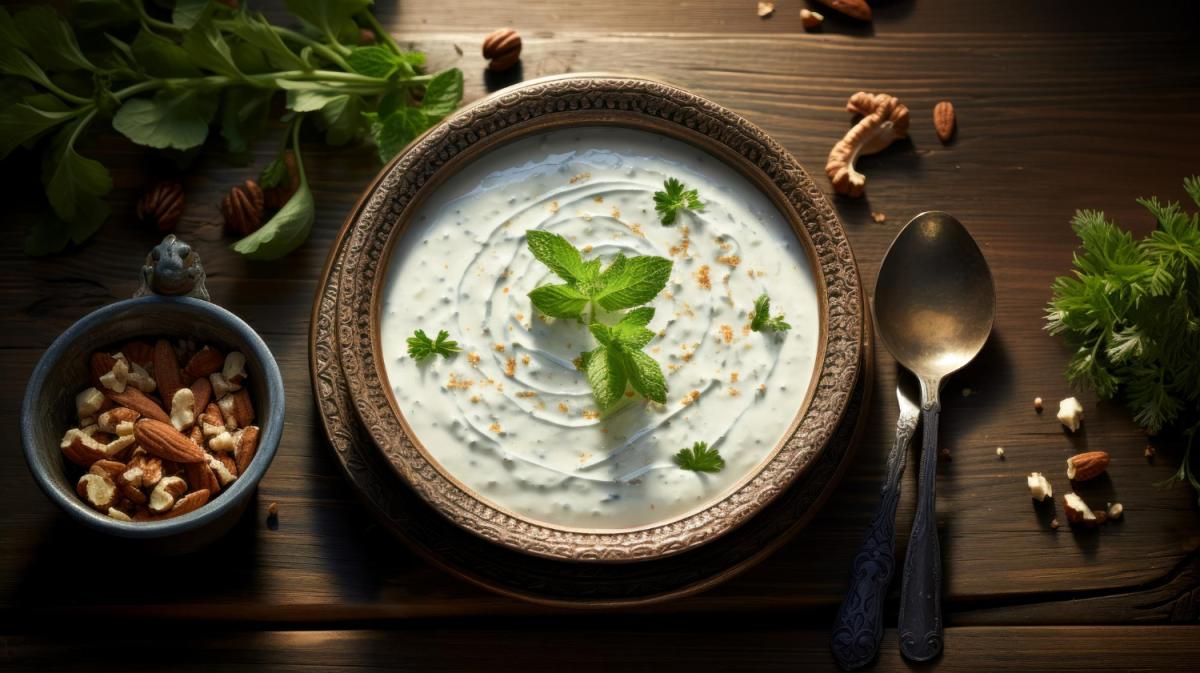When it comes to Middle Eastern cuisine, one cannot overlook the delicious and versatile labneh.
Labneh, also known as strained yogurt or yogurt cheese, is a creamy and tangy dairy product that has been enjoyed for centuries in the Middle East.
It is made by straining yogurt to remove the whey, resulting in a thick and spreadable consistency that is perfect for both sweet and savory dishes.
In this article, we will explore the origins of labneh, its nutritional benefits, and its various uses in Middle Eastern cuisine.
The Origins of Labneh
Labneh has a rich history that dates back thousands of years. It is believed to have originated in the Levant region, which includes modern-day Lebanon, Syria, Jordan, and Palestine.
The process of straining yogurt to make labneh was likely discovered by accident, as people found that removing the whey from yogurt resulted in a thicker and more concentrated product.
Labneh has been a staple in Middle Eastern cuisine for centuries, and it is often enjoyed as part of a traditional breakfast or mezze spread.
It is commonly served with olive oil, za’atar (a Middle Eastern spice blend), and fresh vegetables.
Labneh can also be used as a base for dips, dressings, and desserts, making it a versatile ingredient in the kitchen.
The Nutritional Benefits of Labneh
Labneh is not only delicious but also packed with nutritional benefits. It is a good source of protein, calcium, and probiotics, making it a healthy addition to any diet.
The straining process removes much of the lactose and whey, making labneh easier to digest for those who are lactose intolerant.
Probiotics, which are live bacteria and yeasts that are beneficial for gut health, are abundant in labneh.
These probiotics help maintain a healthy balance of bacteria in the gut, which can improve digestion and boost the immune system.
Labneh also contains calcium, which is essential for strong bones and teeth.
Uses of Labneh in Middle Eastern Cuisine
Labneh is a versatile ingredient that can be used in a variety of dishes.
Here are some popular uses of labneh in Middle Eastern cuisine:
- Spread: Labneh can be spread on bread or crackers, topped with olive oil and herbs for a simple and delicious snack.
- Dip: Labneh can be used as a base for dips, such as muhammara (a spicy red pepper dip) or baba ganoush (a roasted eggplant dip).
- Dressing: Labneh can be thinned out with a bit of water or lemon juice to create a creamy dressing for salads or roasted vegetables.
- Dessert: Labneh can be sweetened with honey or sugar and used as a topping for desserts, such as fruit salads or pastries.
These are just a few examples of how labneh can be used in Middle Eastern cuisine.
Its creamy texture and tangy flavor make it a versatile ingredient that can elevate any dish.
The Versatile Delight
Labneh is a Middle Eastern creamy delight that has been enjoyed for centuries.
Its origins in the Levant region and its rich history make it a staple in Middle Eastern cuisine.
Get the news first!
Labneh is not only delicious but also packed with nutritional benefits, including protein, calcium, and probiotics.
Its versatility allows it to be used in a variety of dishes, from spreads and dips to dressings and desserts.
Whether enjoyed as part of a traditional breakfast or incorporated into modern recipes, labneh is a versatile ingredient that adds a creamy and tangy touch to any dish.

Make Cheese!
